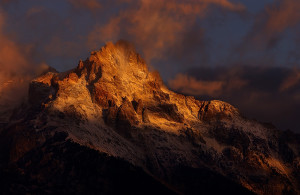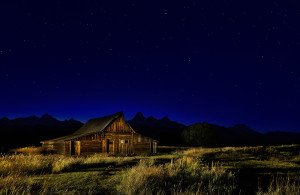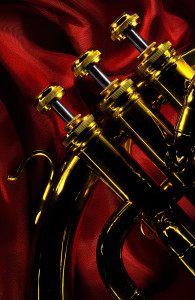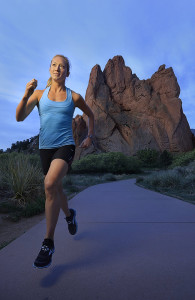Workshop at the Ranch – June 2012 – Question and Answer Series # 5
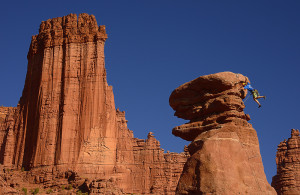 Hi and welcome to this edition of Workshop at the Ranch. This continuing Q&A Series is ongoing as many of you are submitting your photographic, lighting, technical, business, and simply thought provoking questions each month. Keep the Questions coming in via the Contact category on my website and I’ll reply with my best effort to answer quickly. And maybe yours will get written up in the next WATR article. Let’s see what Qs arrived into the email bag this month.
Hi and welcome to this edition of Workshop at the Ranch. This continuing Q&A Series is ongoing as many of you are submitting your photographic, lighting, technical, business, and simply thought provoking questions each month. Keep the Questions coming in via the Contact category on my website and I’ll reply with my best effort to answer quickly. And maybe yours will get written up in the next WATR article. Let’s see what Qs arrived into the email bag this month.
Images #1 and 2… Teton Light, and Mormon Row Twilight. The Digital Photo Workshops, and Long Island Photo Workshops. Question: … Hi Dave. Thanks for all the teaching you do on the Workshop at the Ranch. Is there a “real” ranch where you teach? And if not, where can I go to learn from you. Thanks! Tracy. Answer… Hi Tracy, ….well, yes and no. You are correct in that there is no actual ranch real-estate for WATR. Workshop at the Ranch is just my monthly tutorial article on my website. There are about 85,000 Unique Visitors that come and read each new article monthly. I do however, live out west in the Rocky Mountains on some acreage. Ten years ago when I started the WATR articles I had intended to someday have my own photo workshop at a real ranch in Colorado. And although I have dipped my little toe into teaching some private workshops to individuals, the Workshop at the Ranch remains only on my website. There are several workshops that I will be teaching at during the summer and fall of 2012. You can always find out where I will be teaching by simply “clicking” the Upcoming Workshops category on the left side of the website’s main page. The Digital Photo Workshops, Jackson Hole, WY. September 27-30 www.thedigitalphotoworkshops.com The Digital Photo Workshops are run by Jeff Leimbach of Scott Kelby Media Group fame, and Randy Van Duinen a Nationally known HDR guru and current expert on Lightroom 4. My first workshop with Jeff and Randy was held during late April in Moab, Utah (a.k.a. Arches National Park) where I learned that these two guys are really into creative imagery and that includes Lightpainting. The daily schedule for The Digital Photo Workshops features sunrise landscapes, great HDR and Lightroom 4 instruction during the mid day hours, then beautiful sunset imagery followed by my personal favorite, an evening of Lightpainting. My next destination with The Digital Photo Workshops will be one of my favorite places on earth, Jackson Hole, Wyoming September 27-30. Jackson Hole and Teton National Park is lovely in the fall from sunrise to sunset, and sure to be Lightpainting nirvana as well. This image called Teton Light (Nikon D3x, ISO400, 1/320 at f8, Nikon 200-400mm G VR zoom lens, WB 8000K) is classic early morning sunlight in the Tetons. Mormon Row Twilight (Nikon D3s, ISO2000, 30 seconds at f4.5, Nikon 24-70mm lens, WB 3030K, lit with 2 Brinkmann Max Million II hand held spotlights) is a classic Lightpainting from Mormon Row just east of the Teton Range. Joining us will be Matt Kloskowski from Kelby Media and NAPP…WOW! Whether you are interested in capturing great landscapes, learning HDR/Lightroom 4, or Lightpainting landscapes under the Milky Way, I hope many of you will come join Jeff, Randy and me at The Digital Photo Workshops in Jackson Hole, Wyoming, September 27-30…Yee-Ha! |
||||
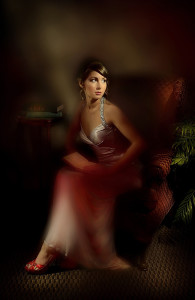
Images: #3 and 4…Red Shoe Diary, and Surfer. Long Island Photo Workshop, August 6-9 www.liphotoworkshop.com I am also returning to the Island…Long Island that is. This will be my 5th time teaching a 4 day class at the Long Island Photo Workshop. The first two days will cater to learning the creative lighting technique of Lightpainting as with this image called Red Shoe Diary (Nikon D800, ISO100, 30 seconds at f6.3, WB 8000K, Inova Bolt 2L flashlight and “Soft Focus Technique.) My class will begin with the Lightpainting basics and Table-Top subjects. Then we will quickly advance to Lightpainting the Live model, both in the studio/classroom and on location. I will be teaching the “Soft Focus Technique” that really adds a distinctive touch to each student’s Lightpaintings. The final two days will be devoted to learning how to use Nikon Speedlights, the FourSquare soft box system, and wireless RadioPopper operation. Live models will be our main subjects for each of these two days of Speedlighting as with this image called Surfer (Nikon D3x, ISO400, 1/200 at f9, Nikon 24-70mm, WB 3030K, Speedlights with warming gels, FourSquare with Softbox.) My good friend and colleague in photography/teaching, Benny Migs will once again be joining me for these 4 days of discovering why Light is the Greatest Influence. If you like light and want to learn about these two lighting techniques, and make images of your own, then I hope to see you at the Long Island Photo Workshop in August 6-9. Wow…it’s going to be a great summer and fall of workshops and teaching for me. Check out the Upcoming Workshops category and see if there is a location and workshop that interests you. Thanks for a great question Tracy. Maybe I’ll see you at The Digital Photo Workshops or the Long Island Photo Workshop this year.
|
||||
Image #5,6,7,8 … French Horn, The Garden Runner, Climbing the Towers, Courthouse. Question … How do you like the NEW Nikon D800 camera? Answer… Well, everyone seems to have submitted this question over the past month or so since the release of the NEW Nikon D800. I chose to wait and make numerous tests and shoot some jobs with the D800 before writing my findings. At $3,000 its 36.3 Mega Pixels of pure quality and clean High ISO are perhaps the most impressive digital product ever produced by Nikon. My purchase of the NEW D800 (I have 2) is primarily for my Lightpaintings, Speedlight imagery, and Strobe work where frame rate per second (fps) is not critical. So, let’s take a look at a few images made with this “marvel of megapixels”. As I mentioned last month, I do very little post processing in Photoshop or any other similar programs. I do however process all my RAW files in the most current version of Nikon Capture NX. I might apply slight toning and White Balance adjustments only if needed, or choose a different Picture Control setting, otherwise I simply save the file as a TIFF. This is a reason for buying the D800 rather than the D800E. In general the D800 includes an active anti-aliasing filter that automatically addresses any moiré issues. Simply said, the D800E does not have this filtration and thus leaves the photographer to manually address any moiré issues in the post processing phase. You may ask, “what about the additional edge sharpness/clarity that the D800E offers because of the absence of the anti-aliasing filter?” This is true, and I suspect there will be programs specifically designed to address the moiré’ issue for those who buy the D800E camera. With the Picture Control Sharpen level set at the default level of 3 I have found that there is a striking increase in edge detail compared to a Sharpen level of 2, or 1. I do not see any increase in noise at the Sharpen level of 3 or 4. This is somewhat different than I observed in previous cameras that had far less megapixels than the D800. With the D3s and previous cameras I usually decreased the Picture Control Sharpen setting to a level of 2 or 1, as they tended to show some unwanted increase in noise and sharpening of noise at the default Sharpen setting of 3 or higher. The D800 edge quality looks spectacular when leaving the Picture Control Sharpen setting at the default level of 3 or even 4, yet has no increase of any noise at the higher ISO settings like 1200, 1600 or even 2000. This is just my opinion of course. It’s my suggestion that photographers make their own tests at a variety of Sharpen settings in the camera’s Picture Control menu and decide for themselves. There are some opinions already circulating regarding the D800 and something called “motion blur” or, to quote Rob Van Petten who produced many of the D800 advertising images for Nikon, “Lateral Blur.” He describes “Lateral Blur” as a function of the pixel density on the sensor being so much finer that the subject to sensor alignment is more critical than with previous cameras. What Rob is suggesting is that photographers who are used to hand holding their current camera and making sharp images at borderline fast enough shutter speeds of say; 1/60, 1/125, 1/250, or maybe 1/320, might not be as successful with the D800. At these slower shutter speeds they might see some “motion blur” or “lateral blur” that was not visible in their older camera. The cause is slight hand/camera movement that older and less pixel density cameras would not show. Simply said, an older camera has less detail, thus more forgiveness regarding tolerance to camera movement. The D800 has way more detail, thus less forgiveness regarding tolerance to camera motion. I can’t say that I have noticed any lateral blur or motion blur in my images. But keep in mind that I use fast shutter speeds quite often, and I am also setting my Picture Control Sharpen setting at the camera’s default level of 3 or perhaps even 4. My fast shutter speeds for sports and using a slightly higher Sharpen setting in Picture Control may be the reason for my success over lateral blur. I have only begun to shoot with this camera where as Rob has been shooting and making test comparisons for months. Photographers might want to Google Rob Van Petten D800 camera and read some of the articles and conversation regarding all of his findings regarding the D800. Another big reason for buying this camera is for its clean High ISO capabilities that caters to my strobe, Speedlighting, and Lightpainting work. The D3x produced a terrific file, but had too much noise above ISO800. Much of my Hyper-Sync strobe work and Speedlight High Speed Sync work with sports is shot at ISO settings at ISO1000 to 2000. The NEW Nikon D800 is impressively clean even at ISO 2000. This Lightpainting image called French Horn is loaded with detail and beautiful edge quality. The Sharpen setting in Picture Control is 4. Nikon D800, ISO200, 30 seconds at f36, Nikon 28-300mm lens, WB 10,000K, Inova Bolt 2L led flashlight, Manfroto Tripod and 410 Geared Head, SanDisk Extreme Pro 36GB Flash Card. As with most Nikon manuals the D800 manual is nearly Biblical in length. I like to set my cameras on Continuous Focus which, is usually done by activating a switch on the front of the camera body. The D800 requires you to set the switch in AF and then press in the side button on the switch while rotating the main command thumb dial to activate the AF-C mode (page 91-92). Although not designed to be a true sports camera I find the AF-C continuous Auto Focus mode of the D800 to be nearly on par with the more sports purpose D4. This image called The Garden Runner is USA marathon competitor Kelly Calway. I used the AF-C mode, which easily tracked her advancement while she ran towards me at extremely close range. The camera’s Flash Sync mode was set to Auto FP (High Speed Sync) which allows me to use a fast shutter sync speed of 1/1000 rather than a typical slow sync speed of 1/250. Nikon D800, ISO640, 1/1000 at f5.6, Nikon 24-70mm lens, WB 3030K, Nikon SU-800 Commander, 4 Nikon SB900 Speedlights each at ¼ power output and each with the Warming Gel, RadioPopper PX system, SanDisk Extreme Pro 36GB Flash Card. The camera’s ergonomics and “general feel” is terrific. I have purchased the additional MB-D12 Multipower Battery Grip, partially for easier griping of the D800. But I’m finding that the D800 body is not only lighter than a D700 but is a more comfortable fit in my hands. It just seems easy to hold even without the MB-D12. This image called Climbing the Towers (Nikon D800, ISO800, 1/500 at f16, Nikon 28-300mm lens, WB 7140K, SanDisk Extreme Pro 32GB Flash Card) features extreme pro climber Eric Odenthal making some aggressive transitions at the end of a very long afternoon of Climbing at Fisher Towers. I did not use the MB-D12 but chose to “travel lite” while hiking around the Fisher Towers area for several hours.
This Lightpainting called Courthouse, in Arches National Park outside Moab Utah, looks clean and detailed at ISO2000. So far I see the D800 camera’s clean High ISO topping out around ISO2000-2500. Yes, it will go higher, but so far I have had beautiful quality results at ISO2000. Nikon D800, ISO2000, 20 seconds at f2.8, Nikon 14-24mm, WB 4000K, Brinkmann Max Million II (2 million candlepower hand held spot light), Gitzo Carbon Fiber Tripod and Head with Kirk “L” Bracket (an old Kirk “L” Bracket that easily fit the new MB-D12 Multipower Battery Grip for the NEW D800, SanDisk Extreme Pro 32GB Flash Card. Battery life seems fine, but I find myself examining the image a bit longer on the D800 camera’s larger LCD monitor. It’s just fun to checkout all the detail…really. That “longer look” tends to run the battery down faster and I find no fault in the battery, just me. The eyepiece and view housing is improved over the D700, but I am used to the D3s and D4 style of eyepiece. No fault of the camera, it’s just a bit smaller. Again, I just need to get used to the body differences between my D3s/D4, and the smaller D800. The 51 point 3D auto focus tracking has been updated. The Dynamic Range is smoother, and I like that for my Lightpaintings. I do not shoot any video and so I can not comment on that feature, but friends like extreme adventure photographer Lucas Gilman are already raving about its 1080 video capabilities and quality. Other functions and modes seem to operate well, and as expected. The D800 is all they said it would be. I am finding that this camera will be a significant asset to my business of making 36.3 megapixel quality imagery. Thanks to all of you who requested my opinion and some images from this newest product from Nikon. |
Well, keep those Questions coming in. Remember, just contact me with your own question via the Contact category on my website and I’ll reply with an answer to you as soon as I can. Any question is a good one so don’t hold back, let me know what question you have on any topic.
See you at a workshop this summer of fall, and for sure next time here on Workshop at the Ranch. Adios. Dave


